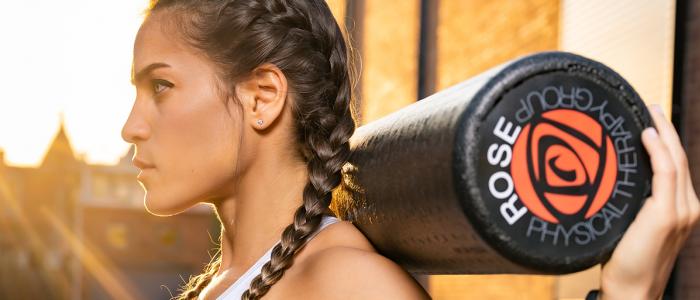
Upper Back Pain
Pain in the upper back is usually the result of poor posture, bad ergonomics, muscle overuse, or injury.
The upper back is the area between the base of the neck and the bottom of the ribcage. There are 12 bones that make up the upper back, which doctors call the thoracic spine.
The upper back is defined based on the vertebrae of your spine, each of which have a number. The first bone of your spine is at the base of the neck, and the 12th bone ends just below the ribcage. Upper back pain occurs anywhere between these bones. Most people describe upper back pain as a burning or pulling sensation in one place, which may be the location of injury or strain.
Common causes of upper back pain include bad ergonomics, muscle weakness and poor posture, muscle overuse, traumatic injury, a herniated disc, pinched nerve, and osteoarthritis.
1. Muscle weakness and poor posture
People can condition their muscles over time to be stronger or more enduring through exercises and weight training. In the absence of training the muscles, they become weak or deconditioned. In some muscles, including back muscles, deconditioning is as easy as sitting at a desk with incorrect posture for too long--something common for the hard working community here in Washington, DC.
Slouching in a chair over a desk may cause a loss of strength in the muscles. Over time, the weakening of muscles may lead to pain in the area as they experience strains or irritation. When you slouch, pressure from gravity and the body itself pushes on the spine, neck, discs, and ligaments. Over time, this pressure can lead to pain and other complications.
It is possible to condition the muscles to be stronger and more durable in most cases. This process starts with correcting the posture while sitting, and taking regular breaks from the desk to move around and stretch. Exercises may also improve strength in the back, and using a standing desk can help, too. Conditioning the muscle requires patience, however, and anyone with chronic upper back pain from weak muscles might benefit from seeing a physical therapist to find an exercise routine for their specific needs.
2. Muscle overuse
Overusing back muscles typically occurs from repeating the same motions over time. Repeated motions cause muscle straign, tightness and irritation. Other repetitive activities may cause similar pain. Someone who has to make the same motion all day, or lifts things above their head throughout the day, for example, may start to experience muscle irritation, tightness, or strain. This could turn into chronic pain if they ignore these signs.
Your physical therapist at Rose will help design a treatment protocol to stretch and strengthen your back muscles so that you can return to action.
3. Traumatic injury
A traumatic injurythat causes back pain can come from car accidents, slipping and falling, work-related accidents, lifting incorrectly (even something small and light, like picking up a pencil), or working out too hard or with the incorrect form. An injury is sometimes obvious when pain occurs just after the incident. At other times, the pain may not develop until later.
Traumatic injuries can be severe, and issues from injuries such as fractured vertebrae put a person at risk of lasting complications. Some complications include chronic pain, nerve damage, and paralysis, and should be treated by your physical therapist at Rose so that you can properly to avoid long-term pain. It can be important to make an appointment at Rose Physical Therapy quickly so that we can get you on the right path to recovery.
4. Herniated disc
Herniated discs are more common in the lower back but may sometimes happen in the upper back region as well. Your discs are soft, rubbery cushions between each vertebra.
Herniated discs occur when a piece of this cushion pokes through and puts pressure on the spine. Even a small amount of pressure can result in significant back pain, as well as other symptoms, including numbness or weakness in the arms or legs.
Reduce pain and other symptoms. A Rose physical therapist will help you understand how to avoid or modify the activities that caused the injury, so healing can begin. Your physical therapist may use different types of treatments such as Maitland or McKenzie Mechanical Diagnosis and Therapy (MDT) to reduce your pain and symptoms.
Improve posture. If your Rose physical therapist finds that poor posture has contributed to your herniated disc, the therapist will teach you how to improve your posture and work ergonomics so that pressure is reduced in the injured area and healing can occur.
Improve motion. Your physical therapist will choose specific activities and treatments to help restore normal movement in any stiff joints. These might begin with "passive" motions that the physical therapist performs for you to move your spine, and progress to “active” exercises and stretches that you do yourself. You can perform these motions at home and in your workplace to help hasten healing and pain relief.
Improve flexibility. Your physical therapist at Rose Physical Therapy will determine if any of the involved muscles are tight, start helping you to stretch them, and teach you how to stretch them at home.
Improve strength. If your physical therapist finds any weak or injured muscles, your physical therapist will choose, and teach you, the correct exercises to steadily restore your strength and agility. For neck and back disc herniations, “core strengthening” is commonly used to restore the strength and coordination of muscles around your back, hips, abdomen, and pelvis.
Improve endurance. Restoring muscular endurance is important after an injury. Your physical therapist will develop a program of activities to help you regain the endurance you had before the injury, and improve it.
Learn a home program. Your Rose physical therapist will teach you strengthening, stretching, and pain-reduction exercises so that you can have a personalized medicine exercise program to perform at home.
Return to activities. At Rose your physical therapist will evaluate your activity levels with you and together you will set your work, sport, and home-life recovery goals. Your treatment program will help you reach your activity in the safest, fastest, and most effective way possible, and also to avoid future injuries. For spine injuries like a herniated disc, your physical therapist may teach you proper body mechanics that will help protect your spine from further injury. Body mechanics might include review of your sport-specific movements, such as your running form, deadlift or squat form, or your form while walking--anything that you do or plan to do on a regular basis that might have contributed to your injury.
Once your pain is gone, it will be important for you to continue your new posture and movement habits to keep your back healthy and pain free.
5. Pinched nerve
A herniated disc can slip far enough out that it compresses the nearby nerve. A pinched nerve in the middle back may cause:
- numbness and pain in the arms or legs
- problems with controlling urination
- weakness or loss of control in the legs
When a pinched nerve comes from a herniated disc, the treatment is similar to treating the herniated disc. A pinched nerve does not usually need surgery, though doctors may recommend spinal steroid injections in some cases.
6. Osteoarthritis
The source of back pain is sometimes not the muscles, but a problem in the bones and joints.
The cartilage that cushions and protects the bones may wear down as a person ages. The term for this is osteoarthritis. It is the most common form of arthritis among older adults, according to the United States National Institute on Aging.
Osteoarthritis may eventually lead to cartilage between the bones completely wearing away, causing the bones to rub together. This can also put pressure on the nerves in the spine, causing numbness or tingling in the arms and legs.
Anyone who suspects they have osteoarthritis should see a doctor for a diagnosis and treatment plan. Treatment typically focuses on managing pain and keeping the joints functioning.
7. Egonomics
Ergonomics is generally defined as the examination of your workplace, and any problems with the design or setup of your workplace can contribute to back pain.
Your physical therapist can examine your workplace ergonomics and suggest adjustments which typically include adjusting angles of items already present, such as your office chair or computer keyboard, mouse, frequently used objects, your telephone and your computer monitor. In other instances, your Rose physical therapist may suggest using particular products such as ergonomics supports to help position your upper back and relieve stress on your joints. In many instances an ergonomics review is not initiated until a person is in pain already, and your Rose physical thearpists are uniquely qualified as ergonomics experts who can design a treatment protocol to relieve and prevent upper back pain due to your ergonomics setup.
Rose physical therapists are experts at treating back pain in Washington, DC!
Whether your upper back pain is from nerves, ergonomics, traumatic injury, herniated disc or muscle overuse, physical therapists at Rose can help! In fact, back pain is the number one thing that we treat here in Washington, DC because everyone in our lovely city tends to work so hard, whether it be at sport or at the office--it is something we love about Washington, DC but this approach to life needs the proper support from a physical thearpist.
Either our office in downtown Washington, DC between Dupont Circle and Farragut Square, or at our office in Navy Yard and Capitol Riverfront, just a few blocks from Capitol Hill has the best area physical thearpists who are capable of getting you on the track to recovery. One on one appointments at Rose are one-hour with a physical therapist, never a technician. And Rose Physical Therapy in Washington, DC accepts most private health insurance so that the best physical therapy is also affordable for you based on your insurance plan.



